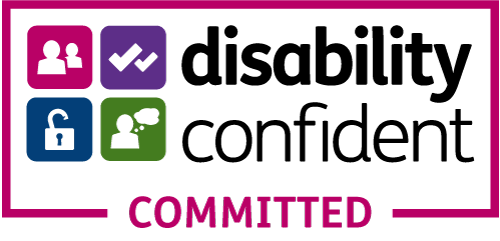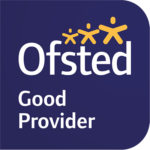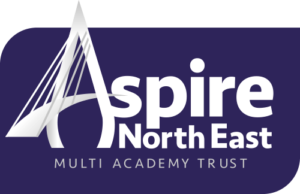Computing Curriculum Overview
Aim:
Here at Southmoor Academy, we aim to securely equip all of our pupils for life beyond school as successful, confident, responsible and respectful citizens. We believe that education provides the key to social mobility and our curriculum is designed to build strong foundations in the knowledge, understanding and skills which lead to academic and personal success. We want our pupils to enjoy the challenges that learning offers.
Our aims are underpinned by a culture of high aspirations. Through developing positive relationships, we work towards every
Intent:
The curriculum includes formal teaching through subject areas, assemblies and extracurricular activities. We regularly review content to ensure we continue to meet our curriculum aims. The ICT, Business and Computing curriculum is planned to enable all pupils to develop:
- Exceptional problem solving skills
- A high level of competency in regards to computer skills
- Basic knowledge of the difference between ICT and Computing
- Business knowledge to help understand the way businesses work in real-life situations
- Passion for the curriculum and interest in future careers in the relevant industries
Throughout our programmes of study, every attempt is made to make explicit links to careers and the world of work. In addition to subject specific links, we aim to explicitly reinforce the skills and aptitudes which support employers say are important in the workplace;
- Resilience (Aiming High, Staying Positive, Learning from Mistakes)
- Collaboration (Teamwork Leadership Communication)
- Creativity (Originality, Problem Solving, Independent Study)
The British values of democracy, the rule of law, individual liberty, and mutual respect of those with different faiths and beliefs are taught explicitly and reinforced in the way in which the school operates.
Sequence and structure:
Our curriculum is split into Key Stage 3 (years 7, 8 and 9) and Key Stage 4 (years 10 and 11). At KS3, pupils have one lesson of Computing per week.
Our Key Stage 3 Curriculum includes the following areas:
Year 7 KS3 Curriculum
Year 7
Click here to view the Year 7 curriculum intent for 2023-2024.
Digital Literacy – Creating a Blog
This unit introduces pupils to the school network and the importance of strong passwords. They will learn how to create a blog and communicate effectively online using email. Pupils will begin to evidence their learning through their blog, investigating different application software and formatting techniques.Computing Systems
In this unit pupils consider the question ‘what is a computer?’ They investigate the components inside a computer and how Input & Output devices, CPU, RAM and the Hard Drive work together. They look at the CPU as the brains of the computer and identify the actions of the Fetch-Decode-Execute cycle when using software. They investigate the role of system software and applications software in a digital system.Vector Graphics
This unit offers pupils the opportunity to design graphics using vector graphic editing software. Through this unit, pupils will be able to better understand the processes involved in creating such graphics and will be provided with the knowledge and tools to create their own for a given scenario.First Steps in Small Basic
This unit is an introduction to programming in a textual language which is a bridge between Scratch and Python. It starts by introducing Turtle graphics, leading to the use of variables and For… loops. Simple programs using the Text window are used to introduce input, output and selection. Pupils will get used to these programming statements while having fun producing coloured graphics. They learn the importance of writing statements accurately, documenting their programs and finding out for themselves in a very visual way how different program statements work.Collaborating Online Respectfully
This unit allows pupils to investigate different ways in which they communicate with each other. Focussing on cyberbullying, pupils will produce a presentation to outline the dangers of cyberbullying and ways to protect themselves online.Data Modelling Using Spreadsheets
In this unit, the pupils study the basics of using Microsoft Excel in order to model a spreadsheet. They look in detail at what is meant by the term ’modelling’. Once they have looked at this they then go on to develop their understanding of how to format a spreadsheet, use cell references, use formulas and functions. Finally, they evaluate the importance of a spreadsheet in different circumstances.
Year 8 KS3 Curriculum
Year 8
Click here to view the Year 8 curriculum intent for 2023-2024.
HTML
In this unit, pupils will explore the building blocks of the World Wide Web, HTML, and CSS and by the end of the unit, they will have a functioning website.Binary Bits & Bobs – Introduction to Data Representation
Students investigate the use of the binary number system in computing, understanding that binary bits make up the machine code understood by the CPU. They look at how images, sounds and videos are stored as combinations of 1’s and 0’s and perform binary conversion and binary arithmetic. They demonstrate the link between ASCII and binary by coding and decoding messages using binary values.Computational Thinking & Logic
This unit introduces pupils to the world of computational thinking and logic. Pupils get to understand the power of problem solving and the different methods that Computer Scientists use to tackle problems. They investigate how decomposition can be used to break down problems into more manageable components and understand how abstractions are used in everyday life. Pupils learn to follow, read and write algorithms. Pupils investigate the use of the binary number system in computing, understanding that binary bits make up the machine code understood by the CPU. They look at how image data is stored as combinations of 1’s and 0’s and perform binary conversion. They demonstrate the link between ASCII and binary by coding and decoding messages using binary values.Introduction to Python
This unit is an introduction to Python, a powerful but easy-to-use high-level programming language. The focus of this unit is to get pupils to understand the process of developing programs, the importance of writing correct syntax, being able to formulate algorithms for simple programs and debugging their programs. The pupils’ final programs will be put into a learning portfolio and will cover the following areas:- Variables
- Inputs & outputs
- Selection (if…else…)
- Iteration (FOR loop / WHILE loop)
- Functions
- Debugging
- Annotating sections of code
Mobile App Development
In this unit, pupils are taken through the entire process of creating their own mobile app. Building on the programming concepts they used in previous units, they will perform user research, design their app, write the code for it, before finally evaluating it.Networks
Pupils will investigate the differences between the Internet and the World Wide Web in this unit, learning about the network hardware used in local and wide area networks. They will investigate different network topologies and understand the need for standard protocols when transferring data.
Year 9 KS3 Curriculum
Year 9
Click here to view the Year 9 curriculum intent for 2023-2024.
The Internet of Things IoT
Pupils will discover how IoT devices mimic human senses to observe, record, and make sense of the world around them. They will learn how the internet allows these devices to become more than the sum of their parts. They will discover the milestones in the development of the IoT, from the Apollo moon missions to IBM’s Smarter Planet initiative.Databases
In this unit, pupils have an insight into how databases are used in everyday life and learn some of the key terminology associated with databases. Pupils look at what makes a successful database and how to select appropriate ‘data types’ when setting up tables. The design of a database is important and pupils experiment with format and layout for a professional database. The database elements covered in this topic include:- Fields
- Records
- Data Types
- Key Fields
- Validation
- Queries
- Input forms
- Reports
Create a 3D Animation
In this unit pupils will discover how professionals create 3D animations and gain a greater understanding of how this important creative field is used to make the media products that we consume. Pupils will be taken through the basics of modelling, texturing, and animating before creating a short animation.Cybersecurity
This unit takes pupils on a journey of discovery of techniques that cybercriminals use to steal data, disrupt systems, and infiltrate networks. They will start by considering the value their data holds and what organisations might use it for. They will then learn about social engineering and other common cybercrimes, and finally look at methods to protect against these attacks.Physical Computing
In this unit, pupils will get acquainted with the host of components built into the micro:bit, and write simple programs that use these components to interact with the physical world. In the process, they will refresh their Python programming skills and encounter a range of programming patterns that arise frequently in physical computing applications. Pupils will build a physical computing project and will be required to select and design their project purposefully, applying what they have learnt by building a prototype.Python: Next Steps
This unit builds upon pupils’ prior experience in Python. They are able to use ‘for’ loops and compare their use with while loops, before moving on to arrays (lists), which are data structures. Functions with and without parameters are covered to help pupils understand the concept and benefits of modular programming. This unit provides ample experience of programming and should support pupils’ decisions if they are considering pursuing Computer Science as a GCSE option.
KS4 Curriculum
Our Key Stage 4 Curriculum includes the following qualification choices:
At Key Stage 4 we offer Cambridge Nationals in Enterprise & Marketing and Information Technologies. We also offer GCSE Computer Science with the OCR exam board:
OCR Cambridge National in Enterprise and Marketing (J837 – from September 2022):
KS 4 Half Term 1 Half Term 2 Half Term 3 Half Term 4 Half Term 5 Half Term 6 Year 10 Unit R067 Enterprise and marketing concepts TA2: Market research to target a specific customer
Unit R068 Design a business proposal
TA1: Market Research
Unit R068 Design a business proposal TA2: How to identify a customer profile
TA3: Develop a product proposal
Unit R067 Enterprise and marketing concepts TA3: What makes a product financially viable
Unit R068 Design a business proposal
TA4: Review whether a business proposal is financially viable
Unit R068 Design a business proposal TA5: Review the likely success of the business proposal
Complete R068 NEA Assessment
Unit R067 Enterprise and marketing concepts TA4: Creating a marketing mix to support a product
Unit R069 Market and pitch a business proposal
TA1: Develop a brand identity to target a specific customer profile
Unit R067 Enterprise and marketing concepts TA4: Creating a marketing mix to support a product
Unit R069 Market and pitch a business proposal
TA2: Create a promotional campaign for a brand and product
Year 11 Unit R069 Market and pitch a business proposal TA3: Plan and pitch a proposal
Unit R069 Market and pitch a business proposal TA4: Review a brand proposal, promotional campaign and professional pitch
Complete R069 NEA Assessment
Unit R067 Enterprise and marketing concepts
TA1: Characteristics, risk and reward for enterprise
Unit R067 Enterprise and marketing concepts TA5: Factors to consider when starting up and running an enterprise
TA3: What makes a product financially viable
Unit R067 Enterprise and marketing concepts TA4: Creating a marketing mix to support a product
TA2: Market research to target a specific customer
Unit R067: Exam revision OCR Cambridge National in Information Technologies:
KS 4 Half Term 1 Half Term 2 Half Term 3 Half Term 4 Half Term 5 Half Term 6 Year 10 Spreadsheet Skills Unit R060 Data manipulation using spreadsheets (NEA) TA1: Planning and designing the spreadsheet solution.
TA2: Creating the spreadsheet solution
TA3: Testing the spreadsheet solution
TA4: Evaluating the spreadsheet solution
Unit R050 IT in the digital world (External Examination) TA2: Human Computer Interface (HCI) in everyday life
Unit R050 IT in the digital world (External Examination) TA3: Data and testing
Unit R050 IT in the digital world (External Examination) TA4: Cyber-security and legislation
TA5: Digital Communications
Unit R050 IT in the digital world (External Examination) TA6: Internet of Everything
Year 11 Unit R060 Data manipulation using spreadsheets (NEA) TA1: Planning and designing the spreadsheet solution.
TA2: Creating the spreadsheet solution
Unit R060 Data manipulation using spreadsheets (NEA) TA3: Testing the spreadsheet solution
TA4: Evaluating the spreadsheet solution
Unit R070 Using Augmented Reality to present information (NEA)
TA1: Augmented Reality (AR)
TA2: Designing an Augmented Reality (AR) model prototype
Unit R070 Using Augmented Reality to present information (NEA) TA3: Creating an Augmented Reality (AR) model prototype
TA4: Testing and reviewing
Unit R050 Unit R050 IT in the digital world (External Examination) TA1: Design tools
TA2: Human Computer Interface (HCI) in everyday life
TA3: Data and testing
TA4: Cyber-security and legislation
Unit R050 IT in the digital world (External Examination) TA5: Digital Communications
TA6: Internet of Everything
OCR GCSE Computer Science:
KS 4 Half Term 1 Half Term 2 Half Term 3 Half Term 4 Half Term 5 Half Term 6 Year 10 - Systems architecture
- Memory and storage
- Programming fundamentals
- Memory and storage
- Programming fundamentals
- Algorithms
- Systems Software
- Programming
- Ethical factors
- Networks, connections and protocols
- Programming
- Cultural factors
- Network security
- Environmental factors
- Programming
- Algorithms
- Legal factors
Year 11 - Boolean logic
- Additional programming technique
- Producing robust programs
- Programming
- Integrated development environment
- Programming
- Consolidation of Comp 01 and Comp 02 in preparation for external exam.
KS5 Curriculum
Our Key Stage 5 Curriculum:
Click here to view the KS5 curriculum intent for 2022-2023.
We know that students who read well achieve well. As such all subject areas are committed to providing regular opportunities to read extensively. We provide regular opportunities for students to read for pleasure and to receive small group interventions if their reading skills are lower than we would expect.
How does our Curriculum cater for students with SEND?
Southmoor is an inclusive academy where every child is valued and respected. We are committed to the inclusion, progress and independence of all of our pupils, including those with SEND. We work to support our pupils to make progress in their learning, their emotional and social development and their independence. We actively work to support the learning and needs of all members of our community.
Teachers are responsible for the progress of ALL pupils in their class and high-quality teaching is carefully planned; this is the first step in supporting pupils who may have SEND. All pupils are challenged to do their very best and all pupils at the Academy are expected to make at least good progress.
Specific approaches which are used within the curriculum areas include:
- Seating plans are used to minimise the disruption in lessons and to optimise the support available.
- Resources well organised and up-to-date
- Displays and visual learning tools are used where necessary
- Where appropriate support from additional adults is planned to scaffold pupils learning
- Group work and discussion using think-pair-share
- Clear teacher/pupil communication.
- Feedback that allows pupils to make progress, whether written or verbal
- Independent study/homework
Reduce the reliance on memory and embed a deeper understanding of Computer Science/Business/I
How does our curriculum cater for disadvantaged students and those from minority groups?
As a school serving an area with high levels of deprivation, we work tirelessly to raise the attainment for all pupils and to close any gaps that exist due to social contexts. The deliberate allocation of funding and resources has ensured that attainment gaps are closing in our drive to ensure that all pupils are equally successful when they leave Southmoor Academy.
Approaches in ICT include:
- We use intervention effectively to ensure that all pupils are given the opportunity to succeed.
- Disadvantaged pupils are identified, and resources are available to them during lunchtime and after-school intervention sessions
- We have trips and lunchtime clubs which run each year providing all pupils with the opportunity to develop their understanding and interest in Computer Science and Business.
How do we make sure that our curriculum is implemented effectively?
- The Faculty Leader of Computing and Technology is responsible for designing the curriculum as well as subsequent monitoring and review.
- The Faculty Leader’s monitoring is validated by senior leaders.
- Staff have regular access to professional development/training to ensure that curriculum requirements are met.
- Effective assessment informs staff about areas in which interventions are required. These interventions are delivered during curriculum time to enhance pupils’ capacity to access the full curriculum.
- Curriculum resources are selected carefully and reviewed regularly.
- Assessments are designed thoughtfully to assess pupil progress and also to shape future learning.
- Assessments are checked for reliability within departments and across the Trust.
- GAP analysis is used throughout the assessment process. This then helps us to identify the pupils who are most in need of intervention sessions.
- There is frequent contact with exam boards (OCR and Edexcel) to ensure that the relevant and up to date content, courses and topics are being taught across all key stages.
How do we make sure our curriculum is having the desired impact?
- Examination results analysis and evaluation
- Analysis of destination measures
- Analysis of attendance data
- Analysis of pastoral data
- Termly assessments-analysis and evaluation meetings
- Lesson observations
- Learning walks
- Work scrutiny
- Regular feedback from Teaching Staff during departmental meetings
- Regular feedback from Middle Leaders during curriculum meetings
- Pupil Surveys





